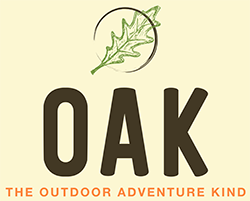It’s Forest Fire Season in the Pacific Northwest (and beyond). Getting outdoors and staying safe may need a little extra research and resourcefulness. The Outdoor Adventure Kind is here with seasonal tips to help you prepare for your summer adventures!
Research
Start by doing a little extra research when selecting your potential adventure locations. Check for active burn restrictions or bans. Never build a fire when a burn ban is in effect. Almost 90% of forest fires are started by humans.
Check current fire conditions not just at your selected site, but in the surrounding area. Also check along routes to and from that location. In addition to active burns, check weather forecasts (temperatures, wind conditions, lightning potential) and fire risks. You can likely find this information on the website for the location you are visiting, as well as for the local land management organization.
Another great resource is the inter-agency and public information website Inciweb. This site provides a single source for information on current, active events. The maps are incredibly helpful, and I encourage you to explore the site and see how much information is available!

Contacts
It’s always a good idea to share your travel itinerary with at least two contacts when heading out on an adventure. Be sure they have each other’s contact information as well, so they can check in with one another if needed. They should know your intended route to your destination, what trails you plan to take, what time you are leaving, and when you expect to return. Other great information to leave includes descriptions of your clothing and gear, plus the make, model, and plates of vehicles you are traveling in.
In forest fire season, be sure your contacts also know of any back-up plans you have in case you get re-routed on the trail or when traveling by car. Let your contacts know at what point they should contact local land management agencies and emergency services to report you as overdue. You can also check in with local land management agencies before starting your adventure. Look for this information as a part of your research before heading to the area; some may request or require a form of registration.
Supplies
In addition to your usual outdoor adventure supplies, consider what gear might be useful specifically during forest fire season. Many people carry cell phone for communication, camera, navigation, and more – but these have range limitations. A personal locator beacon (PLB) may be something to add to your collection if you usually carry only a phone. There are many on the market with a variety useful features and which operate outside of cell phone coverage areas.
Another useful item to consider is either a bandana or a neck gaiter; this may already be in your pack, as these are versatile and light weight additions with many potential uses. During forest fire season, they can become a mask to protect your airways from smoke and floating debris if you find yourself too close to an active fire.
Carrying extra water is recommended in summer months due to typically higher temperatures and more demand on your body for increased hydration. Clean water may also become difficult to find during forest fire season if you are near a burn area.

Extra water is useful if you need to extinguish a small fire to prevent it from spreading. Remember, any fires should be completely out before you leave a site (cool to the touch with no visible sparks, embers, or smoke). Having a collapsible bucket is also helpful for putting out small fires.
Alternatives
Having alternative plans is definitely recommended during forest fire season, and not just for your adventure destination. When doing your research, study maps and fire conditions beyond the immediate area you’ll be in. If there are nearby active fires, or a high risk for new fires, consider changing your destination. Save the risky adventure for another trip.
Remember to also check along your planned travel route for forest fire season conditions. Road closures may prevent you from getting to your planned destination, even though that location is not currently under threat. Additionally, it is good to know what routes – hiked or driven – are available in case conditions change and you need to make a quick exit from the area.
Awareness

It’s important to remain aware of your surroundings when adventuring during forest fire season. If you are able to see surrounding areas (such as from a prominent peak or ridge line), scan for signs of forest fires. Keep an eye on weather conditions, as lightning could spark a new wilderness fire. Winds may carry a blaze, or embers that spark a new one, into a previously untouched area. You also want to remain aware of air quality; not only is heavy smoke dangerous to inhale, it can also limit your visibility. If you are uncertain of the safety risks entering or staying in an area, trust your instincts and exit the area.
Additional Resources
- US Forest Service – Fire Information: Additional quick tips on prevention and safety from one of the largest land management agencies in the region.
- Pacific Crest Trail Association – How to React to Wildfires: This is a great article on prevention and safety. The target audience is thru hikers on the PCT, and there is a ton of good information here.
Stay up to date with these and other valuable tips for your own outdoor adventures! Sign up for the mailing list to receive the monthly newsletter. Questions or comments? I’d love to hear from you, and invite you to contact me.


Recent Comments